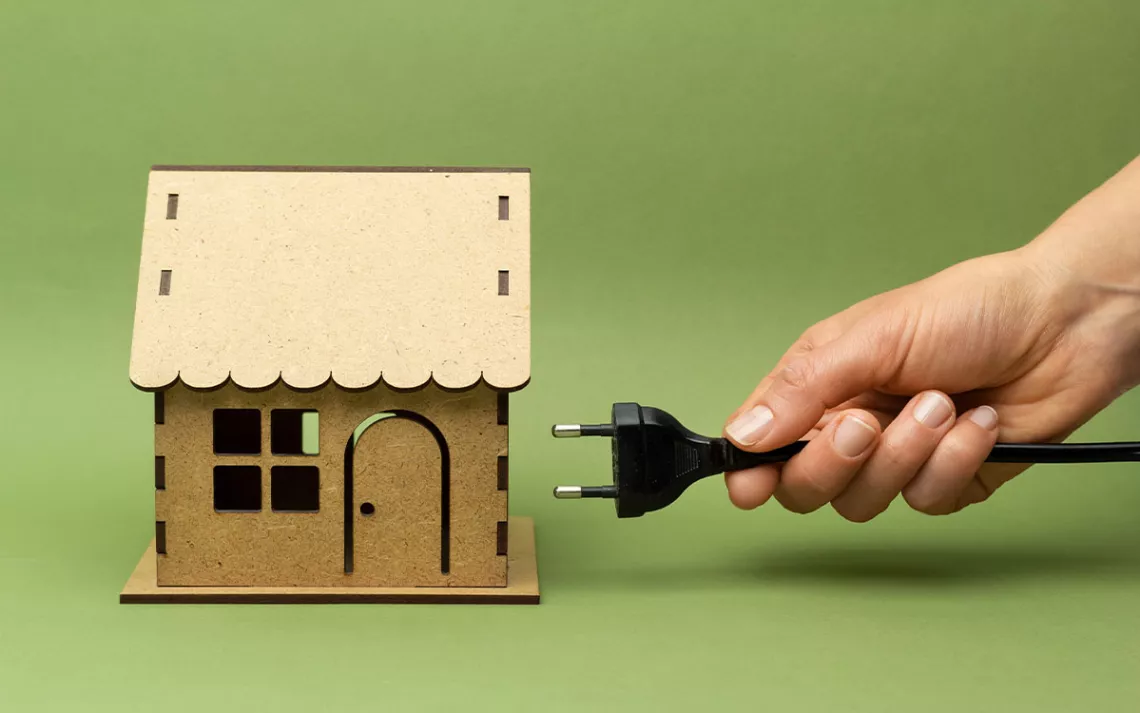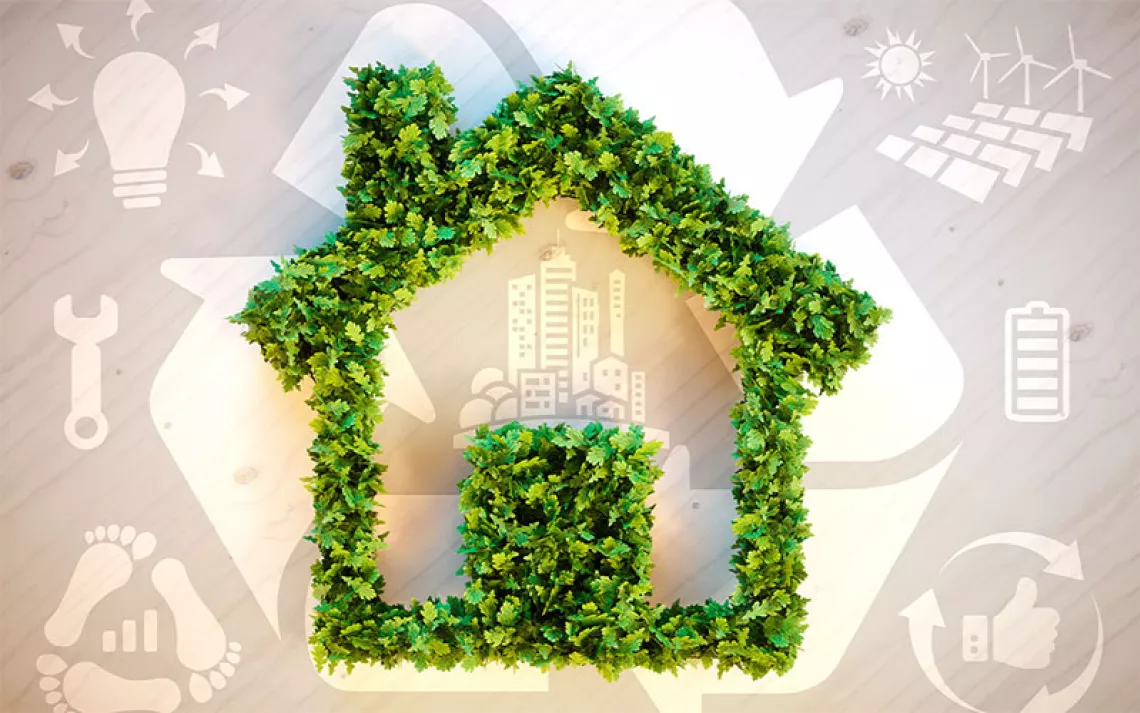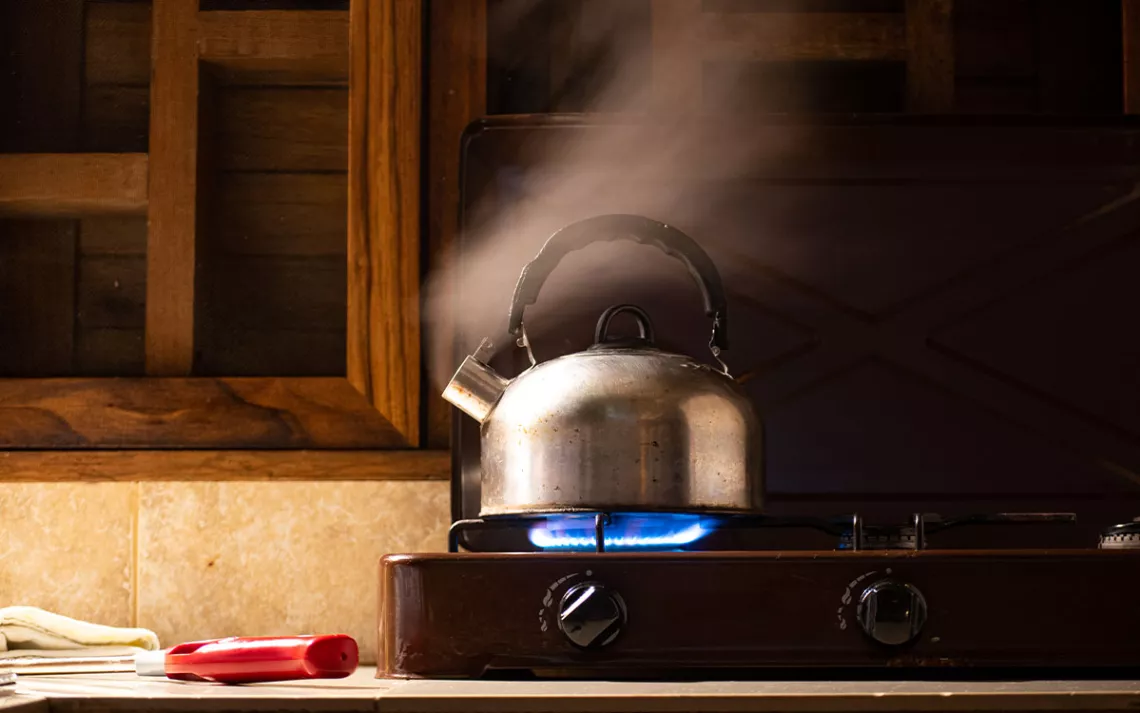How to Plug Into the Benefits of the Inflation Reduction Act
Some tips for fighting global warming by electrifying your life

Conservation of the environment, ecological concept, green energy. Model house and plug. Photo by Oleksandr Todorov/iStock
When the Inflation Reduction Act became law in 2021, climate change experts agreed that it would be a game changer for the clean energy industry.
It is that—and it’s also a giant step for the rest of us. That’s because no matter what your budget is, or whether you own a house or rent an apartment, you qualify for some of the $370 billion contained in the IRA, the largest climate change program in US history.
“Wherever you are in your journey toward decarbonization,” the IRA has something to help you make that next appliance cheaper to run, healthier to use, and emit less carbon dioxide,” Noah Goldmann says. Goldmann’s official title is federal policy associate, at the nonprofit Rewiring America. But “IRA guru” is probably a more accurate title for Goldmann.
“One of the great things about the IRA is that it tackles every piece of the electrification puzzle,” Goldmann says, from utilities to you and me. With so many puzzle pieces, however, knowing the best ways to take advantage of the IRA can be a bit bewildering. That’s where Rewiring America comes in. Rewiring America, which describes itself as “the leading electrification nonprofit working to electrify our homes, businesses, and communities,” has several online tools for helping people get their fair share of financial assistance from the IRA.
A good place to start is at Rewiring America’s Savings Calculator. Goldmann explains:
“You can go to our website, plug in some basic information about your household, and then see what tax credits and rebates you qualify for, based on your income, household size, and location.”
Easy peasy, right?
If you’re planning on getting major upgrades or doing a complete home energy retrofit, you’ll probably want to begin by getting an energy audit.
“An energy audit is a great place to start,” Goldmann says. “You can hire an auditor who will look at your house with an eye toward choosing the electrification measures that can get you the biggest bang for your buck.”
If you’re considering upgrading from a dirty, gas-fired furnace, for example, an energy audit might reveal that you’d be better off installing insulation first, before springing for the more expensive heat pump. If you go this route, you’ll be happy to know that the IRA provides a $150 tax credit for an energy audit.
It’s likely that most Americans will make big appliance changes only as needed, like when a water heater or stove or furnace is about to give out. The IRA has provisions for those “just-in-time” replacements, and Rewiring America’s website is there to walk you through the process. Click through its links to find the appliance you need to replace and you’ll find plenty of suggestions on what to buy and how to get IRA funding to help pay for it.
Keep in mind that, for the most part, the IRA’s consumer programs weren’t designed to make clean, energy-efficient appliances free. The programs were designed to make the cost of purchasing new energy-efficient appliances on par with buying inefficient—and polluting—older technologies. The amount households receive is pegged to income—with more generous incentives available to households that need it the most, including fully covering the cost of some items for households earning less than 80 percent of the area median income.
Of course, even with the help of tax credits and rebates, heat pump water heaters and induction cook stoves are major expenses. Most Americans probably can’t afford to buy these items outright, so they’ll need to get a loan. While interest rates have come down a little in recent months, they’re still relatively high. That’s why the IRA includes $14 billion to buy down the cost of financing for low-to-moderate-income households.
Goldmann points out, “It’s not just the appliances that need to be affordable, but also the cost of financing.”
Some people have expressed frustration that not all the benefits of the IRA have been rolled out yet. But Lori Bird, director of the World Resource Institute’s US Energy Program, told Sierra, “The timeframe isn’t necessarily a problem.” What’s important with a program this big and complex, she says, is that designers get it right.
“It’s going to take a little bit of time, but we’re going to get there,” she says and reminds people that the tax credits and rebates from the IRA will be available for a full decade. That will help the majority of American households to replace old appliances with clean-tech new ones as needed.
The IRA’s smart structure also allows consumers time to do the research necessary to buy electric vehicles, the single largest ticket item for most families. There’s a lot of confusion in the marketplace, Bird says, because the IRA benefits for EVs are complicated.
“Even auto dealers are still learning which makes and models qualify for assistance,” she says. The confusion stems from the formula used to set IRA funding, which includes the percentage of the vehicle manufactured in the United States and whether the minerals used in fabricating EV batteries were domestically sourced. The good news is that, as of January 1, buyers of qualifying EVs can get their $7,500 tax credit at the time of purchase—“cash on the hood” that will sweeten the deal for many buyers.
“Fortunately,” Bird says, “sources like Consumer Reports have been doing a good job of tracking information on EVs and the IRA.”
While the IRA does contain funding for individuals to install home systems for charging EVs, the nation will still need an estimated 1 million public chargers to electrify our current fossil-fuel-based transportation sector (the largest contributor of greenhouse gases). A related 2021 federal program provides funding for some 500,000 EV charging stations throughout the country. Exactly where those chargers are located will determine who has access to them, and that concerns Abre’ Conner.
“Having the funding available was an important step in the right direction,” says Conner, who directs the Center for Environmental and Climate Justice at the NAACP. “Now there needs to be a strengthening of accountability to make sure that communities that should be benefiting actually are.”
Sometimes in the course of reporting a story, you become part of it. That’s what happened to me after talking with Goldmann. Thinking about the aging and noisy heat pump on my roof, I decided to take his advice and scheduled a home energy audit. It turned out to be the right decision. The audit revealed deficiencies in both our heat pump and the connected ductwork. We upgraded to a new variable-speed heat pump with a SEER rating of 19 and corrected the problems with our ductwork. I qualify for a $2,000 tax credit on the heat pump via the IRA and a $1,450 rebate from my utility. The rebate is unrelated to the IRA, but I wouldn’t have known it existed if the IRA hadn’t sweetened the deal enough to upgrade.
Admittedly, the project still wasn’t cheap. But I see it as an investment in my house, a way to lower electric bills, and one small personal step toward a clean energy future. And it’s all thanks to the IRA.
 The Magazine of The Sierra Club
The Magazine of The Sierra Club







